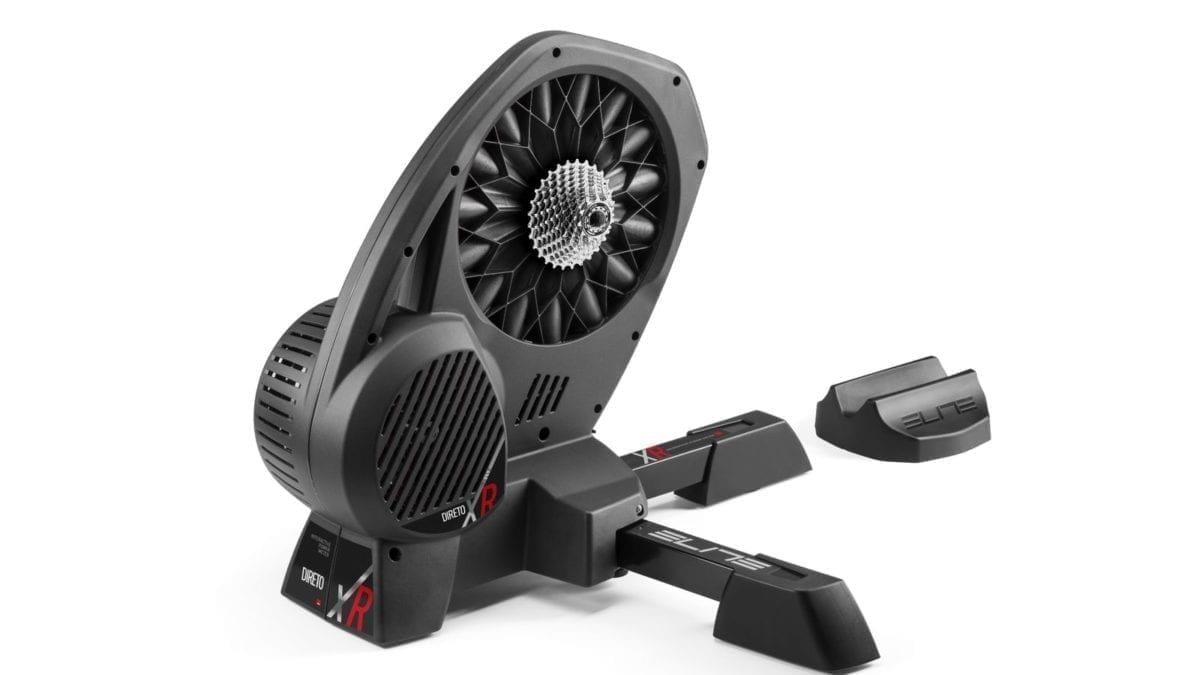Review: Elite Direto XR and Sterzo Smart bring virtual riding to the next level
Control your Zwift avatar's side-to-side movement
 Photo by:
Elite
Photo by:
Elite
The Elite Direto XR has improved when compared with the Direto X. The XR comes with its stabilizer legs already attached. It’s a small touch, but it means you’ll save time, lots of time if you, for example, had put the Direto X legs on backward at first when you tested the machine last year. (This is all hypothetical, of course.) My Direto XR model came with an 11-speed Shimano 105 cassette, so I merely had to set the stabilizers, slide in the thru-axle adapters, attach my bike and plug in the trainer. There was a firmware update via the My E-Training app, too. Other improvements include an increase in resistance to 2,300 W, an increase in slope simulation to 24 per cent (6 per cent more than the Direto X) and a heavier flywheel (up 0.9 kg to 5.1 kg). The most significant improvement is the trainer’s behaviour in erg mode. The Direto XR is much better than the Direto X in this department. I’d say the Direto XR’s erg mode quality is close to that of the Tacx Neo 2T.
[shareprints gallery_id=”68685″ gallery_type=”masonry” gallery_position=”pos_center” gallery_width=”width_100″ image_size=”small” image_padding=”0″ theme=”dark” image_hover=”false” lightbox_type=”slide” titles=”true” captions=”true” descriptions=”true” comments=”true” sharing=”true”]The Direto XR comes with a front-wheel riser, but I left it in the box. I had the new Sterzo Smart to set my front wheel in. The Sterzo Smart gives you the ability to steer within Zwift. You can move your avatar to the left and right side of your lane. (Yellow-line rule is in effect. You don’t get the whole road.)
Since you can position yourself more precisely on the road, you have to be more diligent when you want to slip into another rider’s draft. Yes, that’s more work for you, but that’s not only part of the fun, it offers you a different set of advantages. You can take shorter, inside lines in corners, which non-steering riders can’t do. Also, you can put that wheel suck behind you into the wind merely by moving over.
[shareprints gallery_id=”68686″ gallery_type=”masonry” gallery_position=”pos_center” gallery_width=”width_100″ image_size=”small” image_padding=”0″ theme=”dark” image_hover=”false” lightbox_type=”slide” titles=”true” captions=”true” descriptions=”true” comments=”true” sharing=”true”]If you are using the Sterzo Smart, you should definitely use a mat beneath it. (I had my whole setup on Elite’s training mat.) At the moment, the Sterzo only connects to Zwift via Bluetooth. You pair the Sterzo at the same time as your other sensors. On occasion, I found the steering device slow to connect. Often pairing seemed quicker after a ride had started and I pulled up the paired-devices screen to add the Sterzo.
While the Tacx has its road feel and Wahoo makes its Kickr Climb to mimic the effects of grade changes, I’d say that what the Sterzo adds to your virtual ride is more significant than the behaviours of the other two. Sure all three are attempts at simulation, which, for all the technology and innovation that went into them, are still pretty rudimentary. How can I call them rudimentary, you might ask? Do I have access to some kind of cycling holodeck à la Star Trek that’s so much better? No. I like these features, but they’ll never make me forget that I’m riding inside on a trainer. But the Sterzo lets me interact with the virtual environment. I have to be more engaged, which does make the time on the trainer more enjoyable. (Elite Direto XR: $1,299; Elite Sterzo Smart: $130; elite-it.com)
